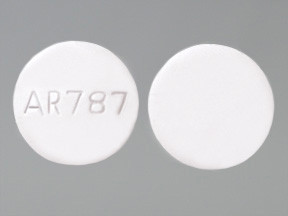FENOFIBRIC ACID - ORAL
PHONETIC PRONUNCIATION: (FEN-oh-FYE-brick AS-id)
COMMON BRAND NAME(S): Fibricor
GENERIC NAME(S): fenofibric acid
Uses
USES: Fenofibric acid is used along with a proper diet to help lower "bad" cholesterol and fats (such as LDL, triglycerides) and raise "good" cholesterol (HDL) in the blood. It works by increasing the natural substance (enzyme) that breaks down fats in the blood. Fenofibric acid belongs to a group of drugs known as "fibrates." Lowering triglycerides in people with very high triglyceride blood levels may decrease the risk of pancreas disease (pancreatitis). However, fenofibric acid might not lower your risk of a heart attack or stroke. Talk to your doctor about the risks and benefits of fenofibric acid. In addition to eating a proper diet (such as a low-cholesterol/low-fat diet), other lifestyle changes that may help this medication work better include exercising, losing weight if overweight, and stopping smoking. Consult your doctor for more details.
How to use FENOFIBRIC ACID - ORAL
HOW TO USE: Take this medication by mouth with or without food as directed by your doctor, usually once daily. The manufacturer directs not to crush or chew the tablet before taking it. However, many similar drugs (immediate-release tablets) can be crushed or chewed. Follow your doctor's directions on how to take this medication. The dosage is based on your medical condition and response to treatment. If you are also taking certain other drugs to lower your cholesterol (bile acid-binding resins such as cholestyramine or colestipol), take fenofibric acid at least 1 hour before or at least 4 to 6 hours after taking these medications. These medications can bind to fenofibric acid, preventing your body from fully absorbing the drug. Take this medication regularly to get the most benefit from it. To help you remember, take it at the same time each day. Do not increase your dose or use this drug more often or for longer than prescribed. Your cholesterol/triglycerides level will not lower faster, and your risk of side effects will increase. It is important to continue taking this medication even if you feel well. Most people with high cholesterol/triglycerides do not feel sick. It is very important to continue to follow your doctor's advice about diet and exercise. It may take up to 2 months before you get the full benefit of this medication.
Side Effects
Precautions
Interactions
Overdose
Images
Reviews
Faq for FENOFIBRIC ACID - ORAL
Fenofibric acid is a medication that belongs to a group of drugs called fibrates. It is used to treat high cholesterol and triglyceride levels in the blood.
Fenofibric acid works by increasing the breakdown of fatty acids and decreasing the production of triglycerides. It also helps to increase the levels of good cholesterol (HDL) in the blood.
The common side effects of fenofibric acid may include stomach pain, constipation, nausea, headache, dizziness, and back pain. It is important to consult a doctor if any of these side effects persist or worsen.
The recommended dosage of fenofibric acid varies depending on the individual's condition and response to treatment. It is usually taken once daily with food. It is important to follow the prescribed dosage and instructions provided by the doctor.
Fenofibric acid is not recommended during pregnancy as it may harm the unborn baby. It is also not recommended while breastfeeding as it may pass into breast milk and harm the nursing infant. It is important to discuss the potential risks with the doctor.
Fenofibric acid may interact with certain medications, including blood thinners, statins, and certain antidiabetic drugs. It is important to inform the doctor about all medications being taken to avoid any potential interactions.
The time taken for fenofibric acid to show its effect may vary from person to person. However, it is important to continue taking the medication as prescribed even if the desired effects are not immediately noticeable.
Fenofibric acid may be used as a preventive measure for certain heart-related conditions, particularly in individuals with high cholesterol and triglyceride levels. However, it is important to consult a doctor for proper evaluation and recommendation.
Fenofibric acid may not be suitable for everyone, particularly those with liver disease, gallbladder disease, kidney disease, or severe kidney problems. It is important to inform the doctor about any pre-existing conditions before starting the medication.
Disclaimer
IMPORTANT: HOW TO USE THIS INFORMATION: This is a summary and does NOT have all possible information about this product. This information does not assure that this product is safe, effective, or appropriate for you. This information is not individual medical advice and does not substitute for the advice of your health care professional. Always ask your health care professional for complete information about this product and your specific health needs.


No Reviews Yet